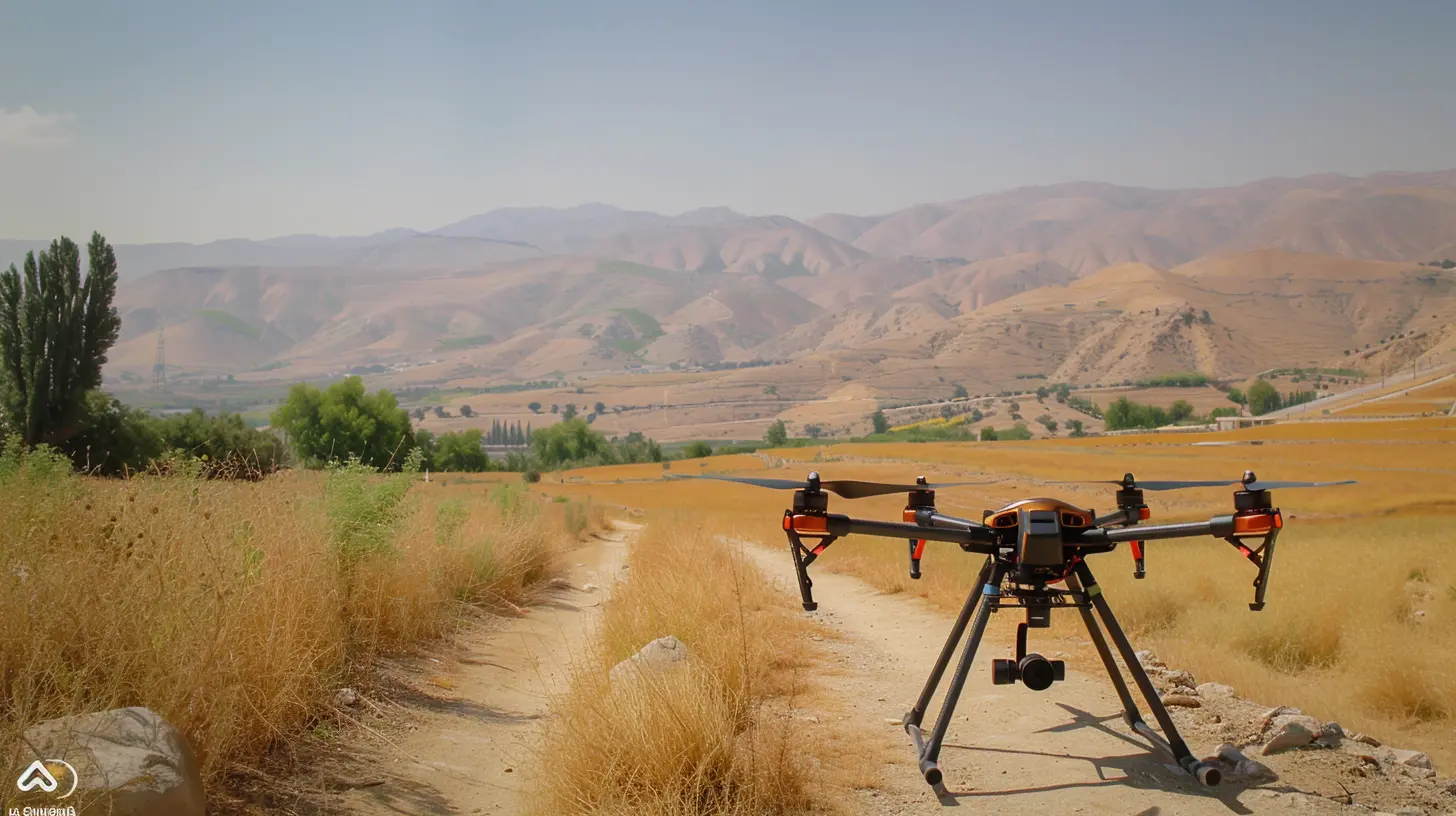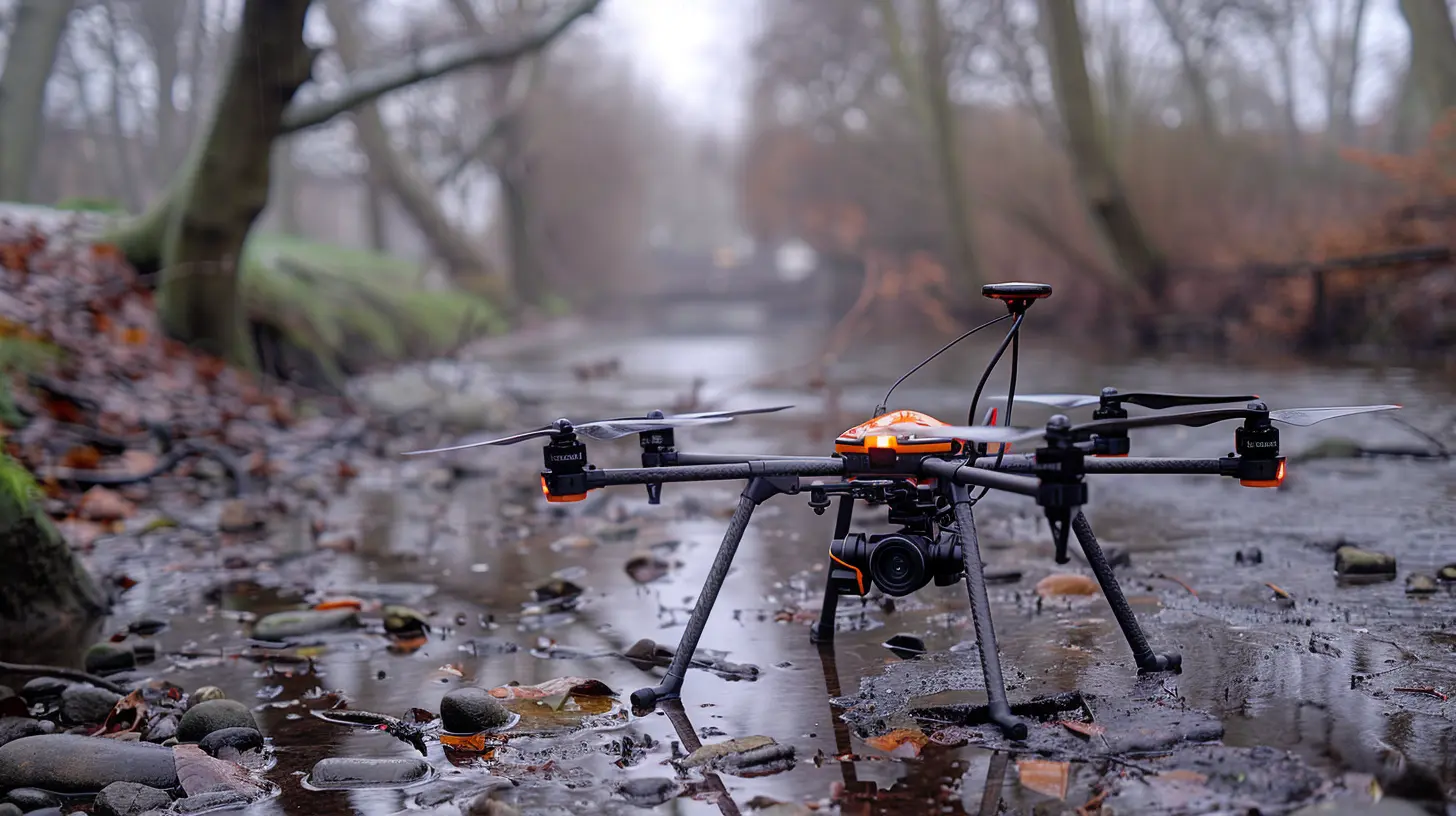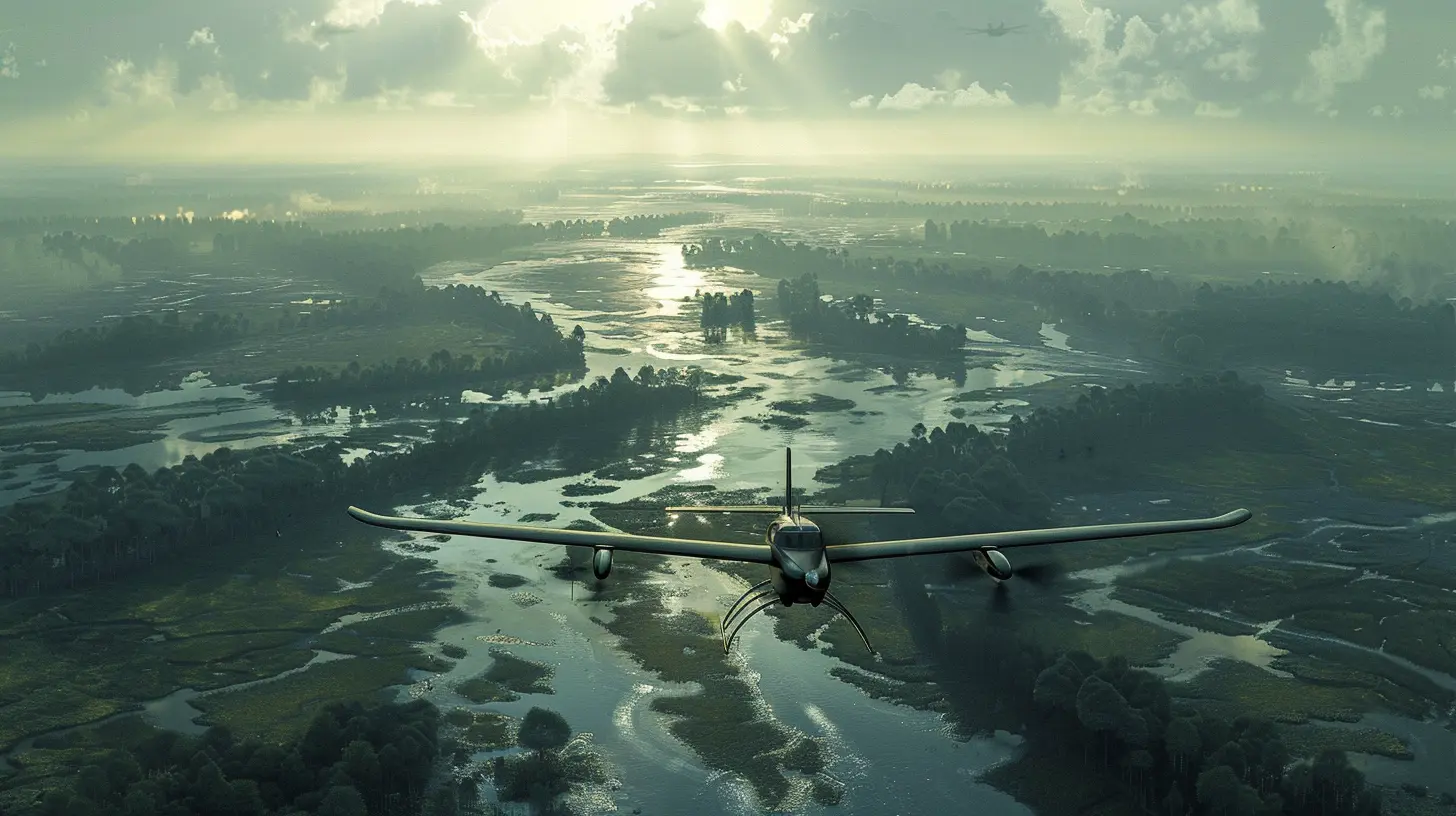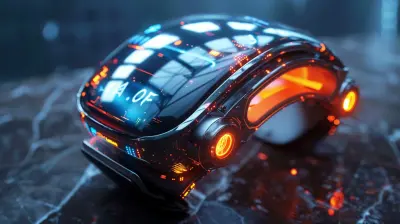The Role of Drones in Environmental Monitoring
10 November 2025
Drones, once considered a niche technology for hobbyists and filmmakers, have become indispensable tools in various industries. From agriculture to disaster management, these flying gadgets have taken center stage in several fields. But one area where their potential truly shines is in environmental monitoring. With the growing concern over climate change, deforestation, and pollution, drones are playing a key role in helping scientists, conservationists, and governments keep a closer eye on the planet's health.
In this article, we’ll explore how drones are revolutionizing environmental monitoring. We’ll look at the different ways they’re being used, the benefits they bring, and the challenges that come with this technology. So, buckle up—let's dive into the world of drones and their impact on the environment!

What Are Drones?
Before we get into the nitty-gritty, let’s take a moment to understand what drones are. In simple terms, a drone is an unmanned aircraft that can be remotely controlled or fly autonomously using software-based flight plans. They come in various sizes and shapes, from small handheld models to large machines capable of carrying heavy equipment.The beauty of drones lies in their versatility. They can be equipped with all sorts of sensors, cameras, and tools, making them perfect for tasks that require precision and real-time data collection. And when it comes to environmental monitoring, drones have become the go-to gadget for gathering crucial information without disturbing the natural habitats they're observing.

Why Drones Are Perfect for Environmental Monitoring
1. Accessibility to Hard-to-Reach Areas
Let’s face it: nature doesn’t always make it easy for us to observe it. Some ecosystems are located in remote, harsh, or dangerous environments, making it difficult for humans to monitor them. For example, dense rainforests, glaciers, or wetlands are not exactly places you can just stroll into with a clipboard.Here’s where drones come in handy. They can fly into areas that are otherwise inaccessible. Whether it's soaring over a dense forest canopy or hovering above a glacier, drones can collect data that would otherwise require expensive equipment or even pose a risk to human life. With their compact size and ability to navigate through difficult terrains, they can get up close and personal with nature without causing any disruption.
Think about it: would you rather hike through a sweltering jungle to observe deforestation, or send a drone to do the job while you sip a cool drink from the comfort of your lab? Yeah, I thought so.
2. Real-Time Data Collection
In environmental science, timing is everything. Whether you're tracking animal migration patterns or measuring air quality, having real-time data is crucial. The good news? Drones excel at delivering up-to-the-minute information.Equipped with advanced sensors, drones can capture live footage, thermal imaging, and even collect air and water samples. This allows scientists to monitor conditions dynamically, enabling faster decision-making and responses. For instance, if a wildfire breaks out, drones can provide immediate live data about the fire's spread, helping firefighters contain it more effectively.
Moreover, drones can cover vast areas in a short amount of time compared to traditional ground-based methods. Instead of spending months collecting data manually, drones can sweep through large ecosystems in a matter of days, if not hours.
3. Cost Efficiency
Let’s not beat around the bush: traditional environmental monitoring methods are often expensive. Satellite imagery, while useful, can cost a fortune and often lacks the detail required for specific tasks. Ground surveys, on the other hand, require labor, time, and expensive equipment.In contrast, drones are much more cost-effective. Not only are they cheaper to operate than manned aircraft or satellites, but they also require fewer resources for deployment. A single drone can do the job of multiple human surveyors in a fraction of the time, all while saving on costs related to travel, equipment, and labor.
4. Non-Intrusive Observation
Traditional monitoring techniques often involve physical intervention—think about setting up cameras, installing sensors, or sending survey teams into ecosystems. This can sometimes disturb wildlife or even damage fragile environments.Drones, on the other hand, offer a non-intrusive alternative. They can fly over ecosystems without leaving a footprint (literally). This is especially important when monitoring endangered species or delicate habitats. By reducing human interference, drones allow for more accurate and ethical data collection.

Applications of Drones in Environmental Monitoring
Drones are being used in a variety of ways to monitor and protect the environment. Let’s take a closer look at some of the most impactful applications:1. Wildlife Conservation
Tracking animals in the wild is no easy task. Traditionally, it has involved tagging animals with GPS trackers, which can be invasive and stressful for the creatures involved. But drones are changing the game.With drones, conservationists can follow animal movements from above without disturbing them. They can monitor migration patterns, population sizes, and even identify illegal poaching activities. For example, in Africa, drones are being used to monitor endangered species like elephants and rhinos, helping to protect them from poachers.
Drones equipped with thermal cameras can even track animals at night, providing valuable insights into nocturnal behaviors that would be impossible to observe otherwise.
2. Forest and Deforestation Monitoring
Deforestation is a major global issue, contributing to climate change and biodiversity loss. Monitoring vast forests is a daunting task, but drones make it easier.By capturing high-resolution images and videos, drones can help researchers assess the health of forests, detect illegal logging activities, and estimate the extent of deforestation. They can also be used to monitor reforestation efforts, ensuring that trees are growing and ecosystems are recovering as planned.
And it’s not just tropical rainforests that benefit. Drones are also being used in boreal forests, mangroves, and other critical ecosystems around the world.
3. Air and Water Quality Monitoring
Environmental pollution is a growing concern, particularly in urban areas. Drones equipped with sensors can monitor air and water quality, providing real-time data on pollutants. This information is crucial for identifying hot spots of pollution and taking corrective action.For instance, drones can fly over industrial areas to measure the concentration of harmful gases like carbon dioxide, methane, and sulfur dioxide. Similarly, they can be used to monitor water bodies for contamination, identifying sources of pollution and helping to prevent ecological disasters.
4. Climate Change Research
Climate change is one of the most pressing issues of our time, and drones are providing valuable data to help researchers understand its impacts. By monitoring glaciers, ice sheets, and sea levels, drones offer insights into how the planet’s climate is changing over time.Drones can also be used to study extreme weather events like hurricanes, floods, and droughts. By flying into the heart of these events, drones can collect data that would be impossible to obtain otherwise, helping scientists refine their climate models and improve forecasts.
5. Disaster Management and Recovery
When natural disasters strike, every second counts. Drones are increasingly being used to assess damage, locate survivors, and deliver aid in the aftermath of hurricanes, earthquakes, and floods.In environmental monitoring, drones also play a crucial role in post-disaster recovery. For example, after a wildfire, drones can survey the extent of the damage and assess the health of the ecosystem. This helps authorities and conservationists develop recovery plans and allocate resources effectively.

Challenges in Using Drones for Environmental Monitoring
While drones offer numerous benefits, they’re not without their challenges. Let’s look at some of the obstacles that come with using drones for environmental monitoring:1. Battery Life and Range
One of the biggest limitations of drones is battery life. Most drones can only fly for about 20 to 30 minutes before needing to recharge. This limits their range and the amount of data they can collect in a single flight. For large-scale monitoring projects, this can be a significant hurdle.2. Weather Conditions
Drones are highly susceptible to weather conditions. Strong winds, rain, fog, and extreme temperatures can affect their performance and even cause them to crash. This is particularly problematic in remote or harsh environments where conditions can change rapidly.3. Data Management
Drones collect massive amounts of data, and managing that data can be overwhelming. Sorting through hours of video footage, thousands of images, and gigabytes of sensor data requires sophisticated software and significant computing power. Additionally, ensuring data accuracy and consistency is critical for meaningful analysis.4. Legal and Ethical Concerns
There are also legal and ethical considerations when using drones, particularly in protected areas or over private land. Different countries have different regulations regarding drone usage, and obtaining the necessary permits can be a time-consuming process.Moreover, while drones offer a non-intrusive way to monitor wildlife, they can still cause distress if flown too low or too frequently. Ensuring that drones are used responsibly is essential to minimizing their impact on the environment.
The Future of Drones in Environmental Monitoring
The future looks bright for drones in environmental monitoring. As drone technology continues to improve, we can expect longer flight times, better sensors, and more advanced data analysis tools. This will enable even more detailed and accurate monitoring of the planet’s ecosystems.Moreover, as drones become more affordable and accessible, we may see their widespread use in citizen science projects. Imagine a world where everyday people can contribute to environmental monitoring by flying their own drones and sharing the data with researchers. It’s a future that’s not too far off!
Conclusion
Drones are proving to be game-changers in the field of environmental monitoring. From tracking wildlife to assessing the impact of climate change, these flying gadgets are providing researchers with the tools they need to protect the planet. While there are challenges to overcome, the potential of drones in environmental conservation is undeniable.As we continue to face global environmental challenges, embracing technologies like drones will be crucial in helping us understand and mitigate the damage we’re doing to the Earth. So, whether you're an environmental scientist, a conservationist, or simply someone who cares about the planet, it’s time to recognize the role drones can play in preserving and protecting our natural world.
all images in this post were generated using AI tools
Category:
DronesAuthor:

Vincent Hubbard
Discussion
rate this article
1 comments
Soren Schultz
In skies they glide, with vision wide, Drones dance through nature, a watchful guide. Guardians of Earth, they trace and trend, In harmony, our planet mend.
November 12, 2025 at 11:36 AM

Vincent Hubbard
Thank you! I'm glad you enjoyed the poem. It beautifully captures the essence of drones as vital tools in environmental monitoring and conservation efforts.


